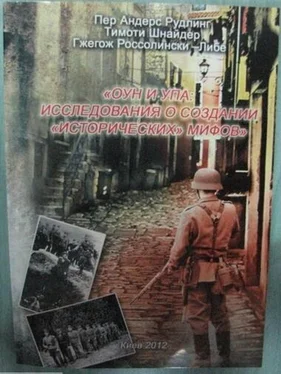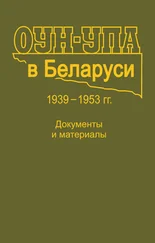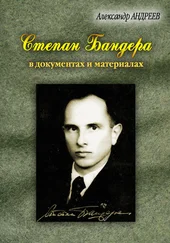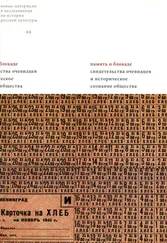Pauley, Bruce F.: Fascism and the Fbhrerprinzip: The Austrian Example. In: Central European History 12/3 (1979), pp. 281–286.
Besier, Gerhard: ›Berufsstдndische Ordnung‹ und autoritдre Diktaturen. Zur politischen Umsetzung einer ›klas-senfreien‹ katholischen Gesellschafts-ordnung in den 20er und 30er Jahren des 20. Jahrhunderts. In: Besier, G./ Lьbbe, Hermann (Eds.): Politische Religion und Religionspolitik. Zwischen Totalitarismus und Bьrgerfreiheit. Gцttingen: Vandenhoeck & Ruprecht 2005, pp. 79-110, here p. 107f.
Kasparavicius, Algimantas: The Historical Experience of the Twentieth Century: Authoritarianism and Totalitarianism in Lithuania. In: Borejsza, Jerzy W./Ziemer, Klaus (Eds.): Totalitarian and Authoritarian Regimes in Europe: Legacies and Lessons from the Twentieth Century. New York, Oxford: Berghahn 2006, pp. 304–308.
Fischer, Bernd J.: King Zog, Albania's Interwar Dictator. In: Fischer 2007, pp. 1949.
Farley, Brigit: King Aleksandar the Royal Dictatorship in Yugoslavia. In: Fischer 2007, pp. 51–86.
Ahmad, Feroz: Kemal Ataferk and the Founding of the Modern Turkey. In: Fischer 2007, pp. 141–163.
For AnastasiT VonsiatskiT, cf. Stephan, John J.: The Russian Fascists. Tragedy and Farce in Exile 1925–1945. New York: Hopper & Row 1978, pp. 91-140. For Konstantin RodzaevskiT, cf. Stephan 1978, pp. 73–90.
In Canada fascist movements occurred as well, cf. Betcherman, Lita-Rose: The Svastika and the Maple Leaf. Fascist Movements in Canada in the 1930s. Toronto: Fitzhenry & Whiteside 1975.
Motyka 2006, pp. 231–234; FSB (Federal'naia Sluzhba Bezopasnosti), Moscow, N- 19092/T. 100, l. 233 (Ste-pan Bandera's prison card).
On the pogroms in western Ukraine, cf. Pohl, Dieter: Anti-Jewish Pogroms in Western Ukraine — A Research Agenda. In: Barkan, Elazar/ Cole, Elizabeth A./Struve, Kai (Eds.): Shared History — Divided Memory: Jews and Others in Soviet-Occupied Poland, 1939–1941. Leipzig: Leip-ziger Univ.verl. 2007, pp. 305–313; Lesser, Gabriele: Pogromy w Galicji Wschodniej w 1941 r. [Pogroms in Eastern Galicia in 1941]. In: Traba, Robert (Ed.): Tematy polsko-ukraińskie [Polish-Ukrainian Subjects]. Olsztyn: Wspуlnota Kulturowas Borussia 2001, pp. 103–126. Similar waves of pogroms also broke out shortly after the start of the German-Soviet war in North-Eastern Poland, Lithuania, Latvia, Estonia, Bessarabia and Bukovina. For pogroms in Poland, cf. Żbikowski, Andrzej: Pogroms in Northeastern Poland — Spontaneous Reactions and German Instigations. In: Barkan/ Cole/Struve 2007, pp. 315–354. For pogroms in Lithuania, cf. Dieckmann, Christoph: Lithuania in Summer 1941. The German Invasion and the Kaunas Pogrom. In: Barkan/Cole/Struve 2007, pp. 355–385. For Latvia and Estonia, cf. Bundesarchiv Berlin Lichterfelde R58/215, l. 134. (Ereignismeldung UdSSR, Nr. 40, 01.08.1941). For Bessarabia and Bukovina, cf. Solo-nari, Vladimir: Patterns of Violence. The Local Population and the Mass Murder of Jews in Bessarabia and Northern Bukovina, July-August 1941. In: Kritika: Explorations in Russian and Eurasian History 8/4 (2007), pp. 749–787. The first pogrom actions in L’viv started probably on 30 June 1941 or even before. For testimonies that date the beginning of the violent actions to July 1, 1941, cf. Lewin, Kurt I.: Przeżyłem. Saga Świętego Jura spisa-na w roku 1946 [I Survived. The Saga of Saint George Written in the Year 1946]. Warszawa: Zeszyty Literackie 2006, pp. 56–57; AŻIH (Archiwum Żydowskiego Instytutu Historycznego w Warszawie) 229/54, Teka Lwowska [L’viv portpholio], l. 2. For the course of the pogrom in L’viv, cf. Mick, Christoph: Ethnische Gewalt und Pogrome in Lemberg 1914 und 1941. In: Ost-europa 53 (2003), pp. 1810–1829, here p. 1810f., pp. 1824–1829; Heer, Hannes: Einьbung in den Holocaust: Lemberg Juni/Juli 1941. In: Zsf. f. Ge-schichtswissenschaft 49 (2001), pp. 409–427, here p. 410, p. 424; Bruder 2007, pp.140–150; Grelka, Frank: Die ukrainische Nationalbewegung unter deutscher Besatzungsherrschaft 1918 und 1941/1942. Wiesbaden: Harras-sowitz 2005, pp. 276–286; Pohl 1997, pp. 60–62; Wachs, Philipp-Christian: Der Fall Theodor Ober^nder (1909–1998). Frankfurt/M: Campus 2000, p. 71, pp. 78–80. For the violent actions against Poles in Volhynia and Galicia, see Motyka 2006, pp. 298400; Snyder 1999, pp. 93-100. For the second Soviet occupation of Western Ukraine, the brutal conflict between the Soviets and the OUN-UPA, and the terror conducted by the Soviets and the OUN-UPA against the civil population, cf. Burds 1997, pp. 104–115; Bruder 2007, p. 231f., p. 261f.; Motyka 2006, pp. 503–574, p. 649f.; Boekh, Katrin: Stalinismus in der Ukraine. Die Rekonstruktion des sowjetischen Systems nach dem Zweiten Weltkrieg. Wiesbaden: Har-rassowitz 2007, pp. 339–367. For the number of Ukrainians killed by Poles, see Motyka 2006, p. 411f.
Tsentral'nyi derzhavnyi arkhiv hromads'kykh ob'iednan' Ukrainy (TsDAHO) f. 1, op. 23, spr. 926, l. 199 (Postanovy II. Velykoho Zboru Orha-nizatsni Ukranns'kykh Natsionalistiv, l. 37). This salute later embarrassed the OUN. In postwar publications reprinting the resolutions of the second OUN conference, the resolution about the fascist salute was deleted from the text. Compare, e.g., OUN v svitli postanov Velykykh Zboriv [The OUN in the Light of the Resolutions of Grand Assemblies] (n.p.: Zakordonni Chastyny Orhanizatsm Ukraпns'kykh Natsionalistiv, 1955), pp. 44–45 with the original publication of 1941 in: TsDAHO f. 1, op. 23, spr. 926, l. 199 (Postanovy II. Velykoho Zboru Orhani-zatsпi Ukraпns'kykh Natsionalistiv, 37).
Not all DPs left Ukraine together with the withdrawing German army in 1944. Some of the DPs were sent to Germany as forced labourers earlier during the war.
Himka, John-Paul: A Central Euro pean Diaspora under the Shadow of World War II: The Galician Ukrainians in North America. In: Austrian History Yearbook 37 (2006), pp. 17–31, here p. 18.
Satzewich, Vic: The Ukrainian Dia spora. London, New York: Routledge 2002, p. 105.
Ibid.
V Avangardi Ukraпns’koi spravy. Liga vyzvolennia Ukraпny [In the Vanguard of the Ukrainian Matter]. In: http://www.lucorg.com/luc-histo-ry_174.htm (accessed: 23.10.2009).
Sawa-Priatka, Tania: A Short His tory of the Ukrainian American Youth Association’s» Oselia «on the Occasion of its 50th Anniversary. In: http://www.cym.org/us/ellenville/Oselia50_UWar-ticle.asp (accessed: 09. 12.2009).
Sawa-Priatka, Tania: unnumbered manuscript. For the organisation of banderivtsi in Canada, cf. Lalande, Julia:»Building a Home Abroad«. A Comparative Study of Ukrainian Migration, Immigration Policy and Diaspora Formation in Canada and Germany after the World War II (Diss., Univ. of Hamburg, 2006). In: http://www. sub.uni-hamburg.de/opus/volltexte/2007/3265/pdf/Lalande_Dissertation_2006.pdf, pp. 184–190 (accessed: 24.10.2009). For the camp in Ellenville, the monument of the Ukrainian heroes and the reproduction of banderits in this camp, see http://www.cym.org/us/archives/2009/2009PamyatnykProj.asp (accessed: 24.10.2009). For the camps in Canada, cf. Mycak, Iryna: The Ukrainian Youth Association of Canada 1948–1988. Toronto: Beskyd Graphica 1990, p. 8.
Читать дальше









